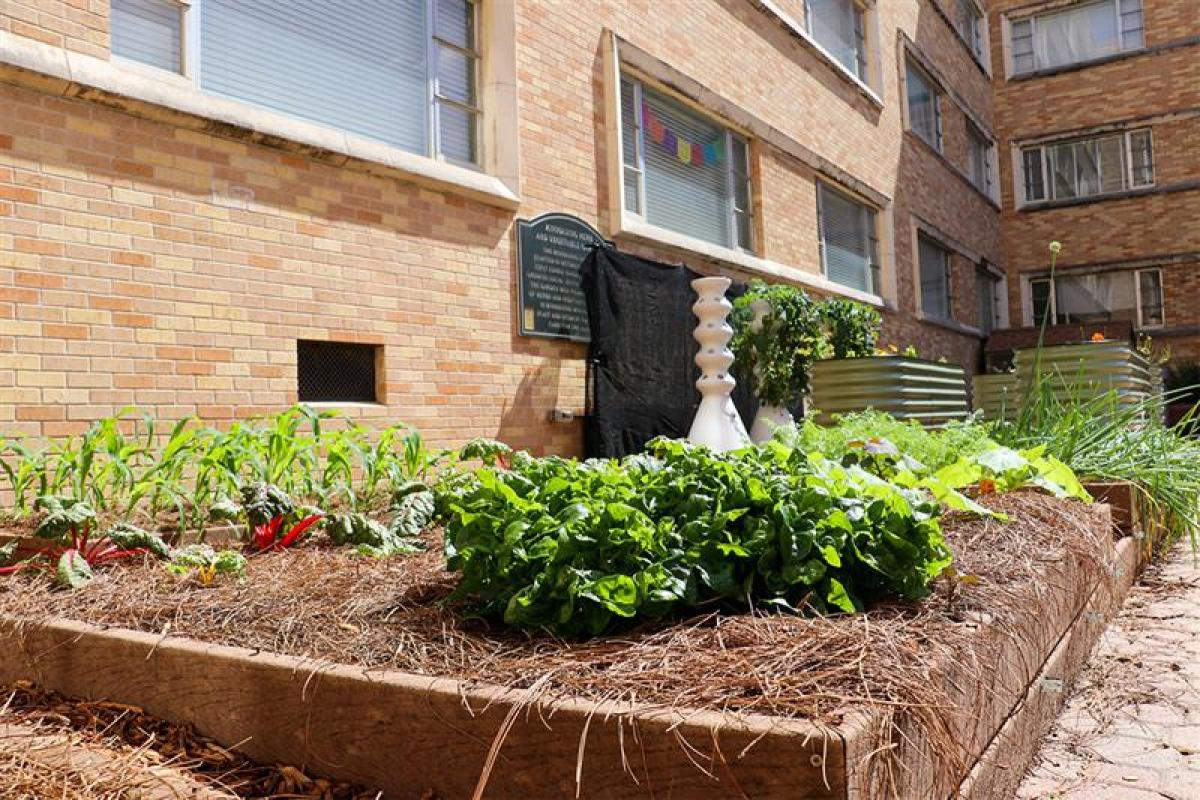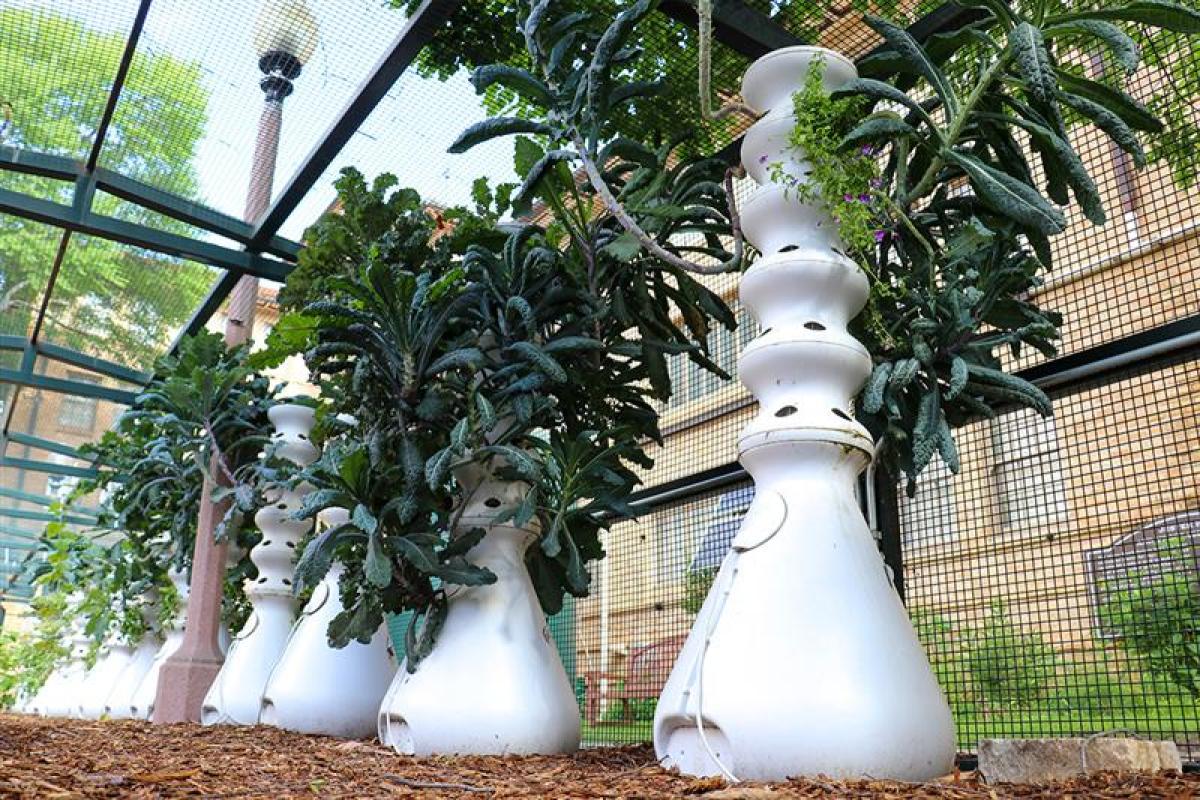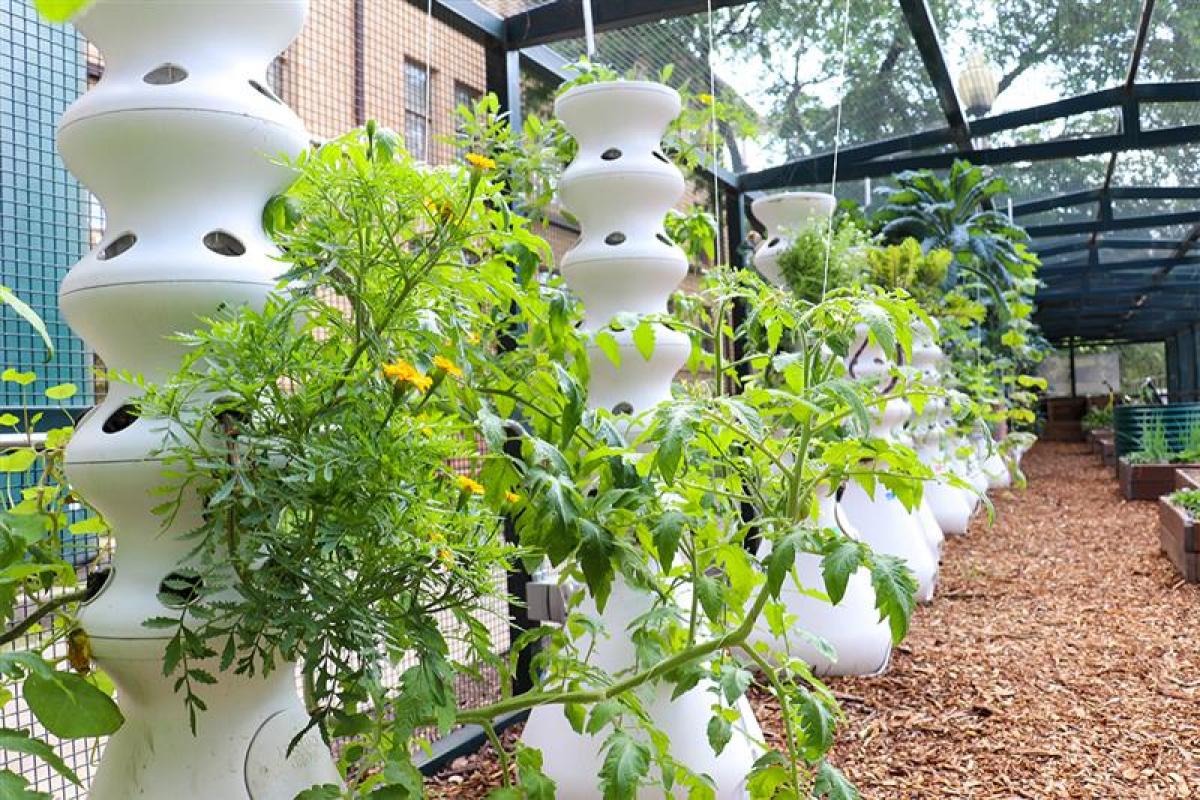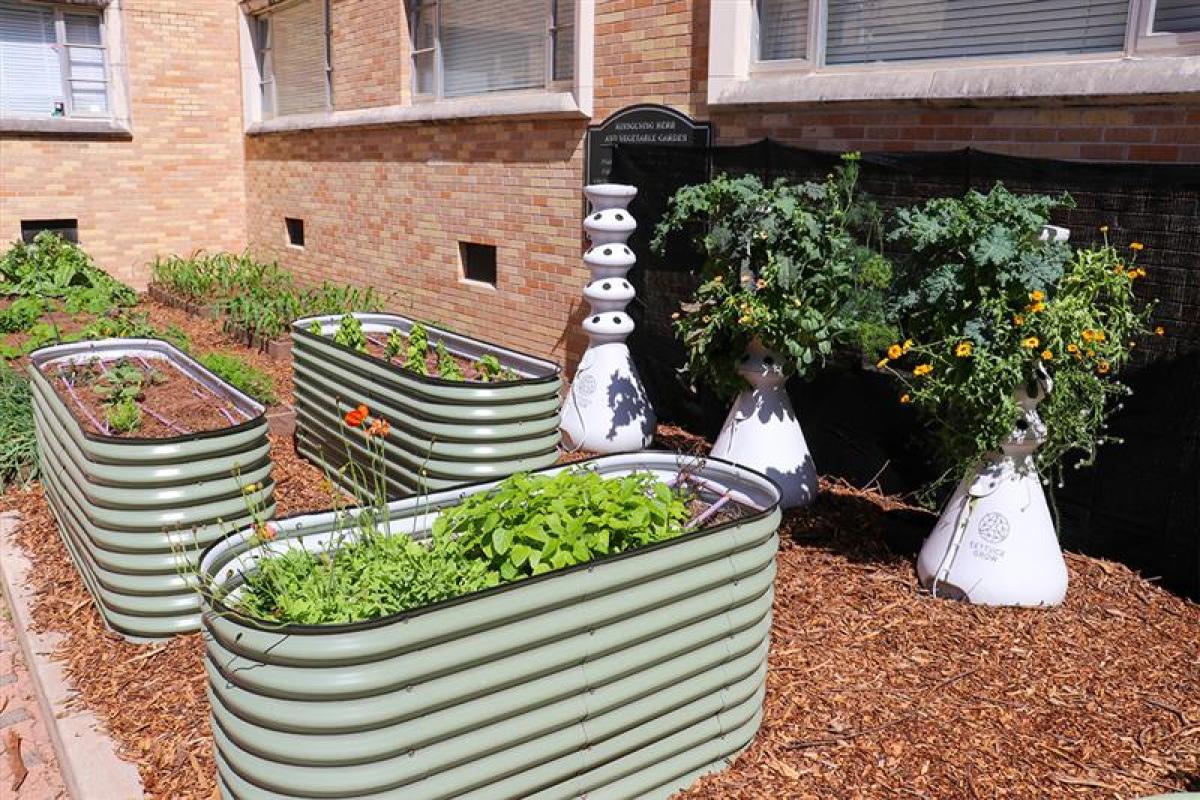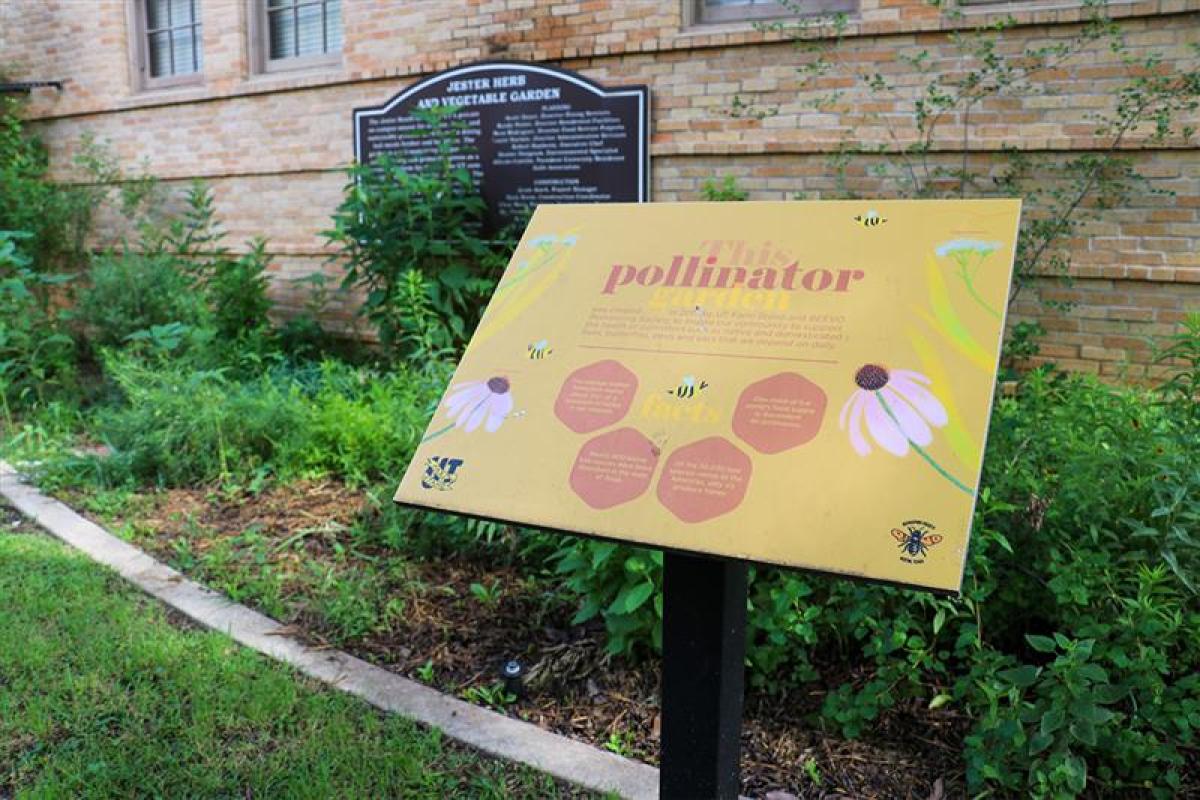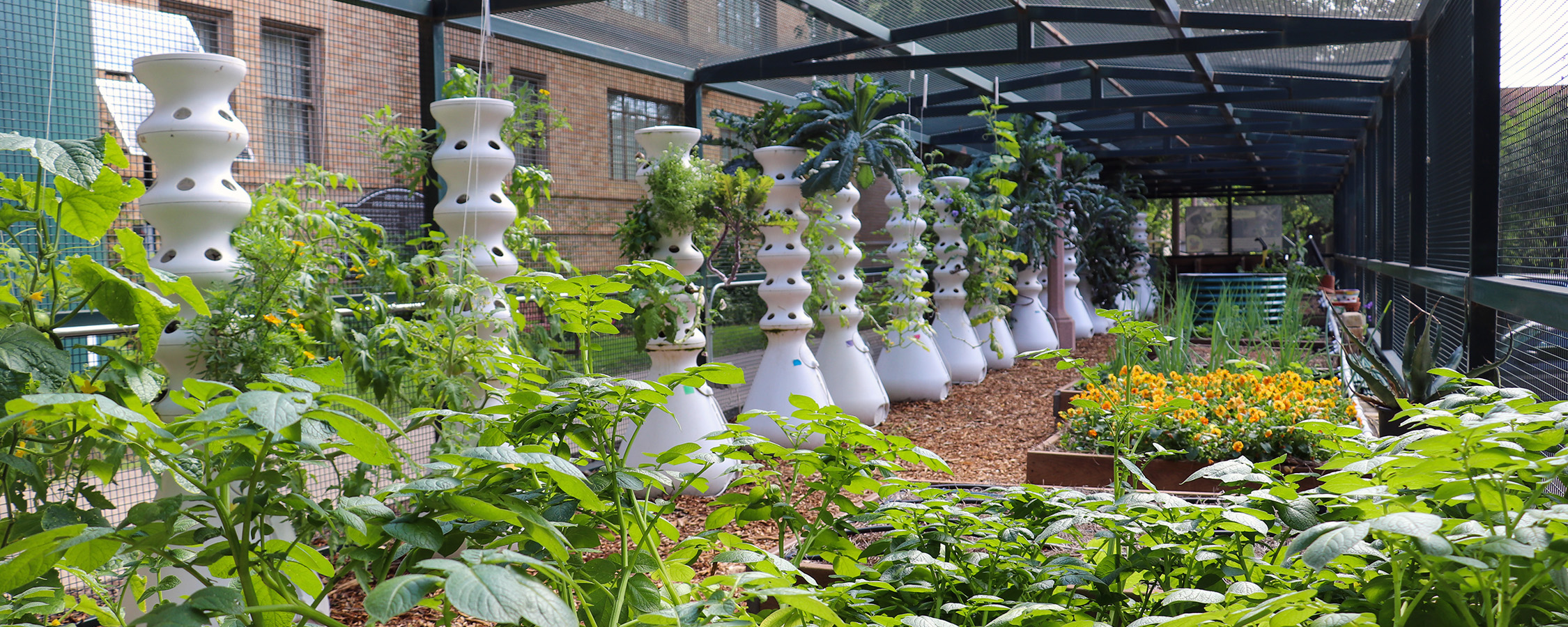
Learn about our on-campus gardens where we grow sustainable foods for use at our markets and dining halls. Maintained by students, our gardens grow food in an environmentally-conscious way and serve to teach the campus community about food origins, garden management and environmentalism. Use our gardens map to discover where our food gardens are located.
Garden Spaces
Jester and Kinsolving Gardens
We have one garden between Jester Center and Brackenridge Hall, and another in the Kins Dining courtyard. The gardens were established in 2013. Produce grown in the gardens goes to our kitchens for meals and is sold at UT Farm Stand markets. We host educational garden work days where students can attend and learn tasks such as garden management, planting, watering, composting and harvesting. No prior gardening experience is required to attend. If you’re interested in joining our work days, visit our volunteer page.
Hydroponic Towers
Our garden between Jester Center and Brackenridge Hall – the Jester Garden – features 20 hydroponic towers that were installed in 2019 via a UT Green Fund grant. These towers house nearly 30 plants, which they efficiently grow by utilizing a vertical, gravity fed watering system known as hydroponics. This run-off free method allows us to grow more plants in smaller confines, cutting our space and water usages by 90%.
Demonstration Bed
The Jester Garden features several demonstration garden beds that showcase unique formats of organic gardening, including pallet and hay bale gardens, and companion planting.
Pollinator Garden
The pollinator garden was added to our infrastructure in 2018. It was designed to promote the growth of native pollinator populations and, in turn, increase the yields of our campus food crops. Beyond this restorative role, the garden likewise helps educate our campus community about pollinators. Here you can find native plants such as Echinacea, Gregg’s Mistflower, Heartleaf Hibiscus, and American Beautyberry.
South Asia Garden
The South Asia Garden behind Brackenridge Hall is a living classroom for learning about South Asian cultures, sustainable food production, healthy eating, and the global histories of fruit, vegetables and herbs common to South Asian foodways. This garden is a collaboration between UT Farm Stand and the South Asia Institute, established with a UT Austin Green Fund grant.
The South Asia Garden design reflects both the traditions of royal gardens as well as day-to-day household kitchen gardens. The plants growing here are part of a slow process of globalization and exchange that began 5,000 years ago, as people in the South Asia region cultivated indigenous plants while blending new plants into their cuisines through waves of migrations and introduction from Africa and Southeast Asia.


